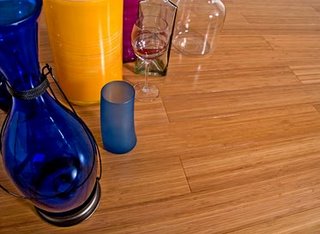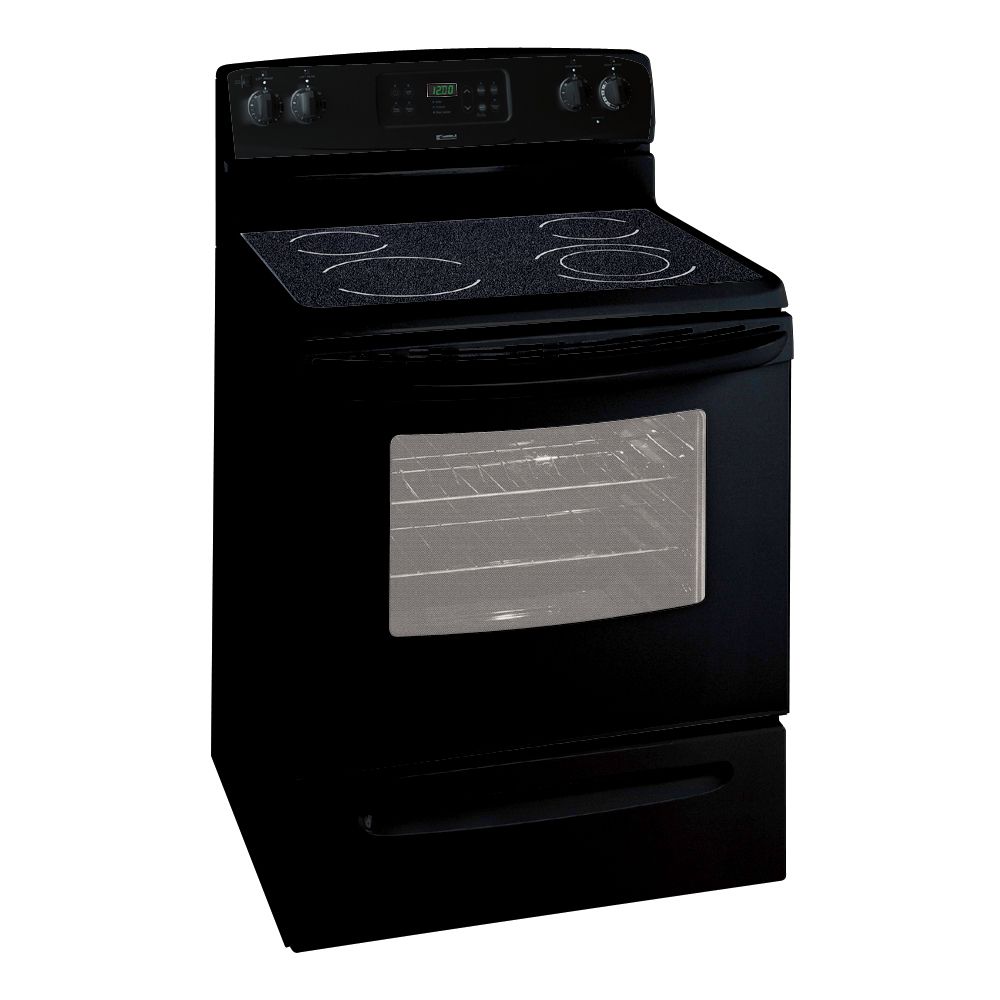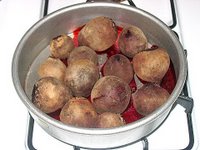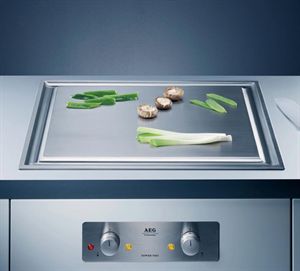I thought after the stove, we should work on the microwave… I checked on the Consumer Reports microwave comparisons, and frankly, I think we may as well simply build a sturdy shelf for the microwave in the garage, and use it. It has a turntable, it’s new-ish, and it’ll work until it doesn’t… at which time, we’ll invest in another one. AND, it’s black…
You know, I think I’m painting the fridge black.
Don’t be scared. I might not. But appliance paint is easy enough to come by… I might just do the sides and leave the doors white. Or, just do the doors…
The mind boggles with the things they come up with on Trading Spaces. And while we admit that it isn’t always something that works for long, I have been reading the “chatter” again, and, after checking with the hivemind, and looking at the chalkboard paint in DA’s house, I’m a believer… some paints do work. On the other hand, we could always take the doors to a body shop, and get them done quickly there. Or we could use contact paper. OR, we could live with a glaring white fridge and black stove and dishwasher. Worse things have happened… Much worse. And besides, if the floor is going to be blonde, natural bamboo, it’ll be very pale and yellowish.
Unless that’s not the color we choose. Unless we go with one of the two shades of carbonized.
 And I guess that’s what’s left to decide about the floor. Lemony pale, or carbonized sugary brown? Straight lines or narrow planks? Should we check out stains? I guess my biggest concern is that the dark floors and dark appliances will make the kitchen… dark. When I think, though, of the kitchen banquette seating, with perhaps a bamboo veneer or a pale stained base and a brightly colored (but not light colored — can’t have light colored cushions where we’re sitting and eating, since we’re unashamedly shlobs) cushion cover, maybe something stripey to match the drapes (that company does sell fabric, methinks, if you want the same colors — after all the trouble we took to get the @#$%^&*! things we should keep them, maybe?), the whole little kitchen/dining area might not be half bad. Add to it the half wall if we cut down the pantry, adding in more light, and it might be a really nice addition… IF we can cut down the pantry wall without it impacting the electrical or the beams in the house…
And I guess that’s what’s left to decide about the floor. Lemony pale, or carbonized sugary brown? Straight lines or narrow planks? Should we check out stains? I guess my biggest concern is that the dark floors and dark appliances will make the kitchen… dark. When I think, though, of the kitchen banquette seating, with perhaps a bamboo veneer or a pale stained base and a brightly colored (but not light colored — can’t have light colored cushions where we’re sitting and eating, since we’re unashamedly shlobs) cushion cover, maybe something stripey to match the drapes (that company does sell fabric, methinks, if you want the same colors — after all the trouble we took to get the @#$%^&*! things we should keep them, maybe?), the whole little kitchen/dining area might not be half bad. Add to it the half wall if we cut down the pantry, adding in more light, and it might be a really nice addition… IF we can cut down the pantry wall without it impacting the electrical or the beams in the house…
Ah, decisions, decisions…


 about our makrut lime tree. Probably any tree of which you actively consume the leaves, one should worry over… We worry mostly that… we’ll kill it. There are really good sauces to be made from makrut or Thai lime leaves. We made a simple sauce with pulverized leaves, garlic, shallots, curry paste, Peppers of Death Sauce (made with chile d’arbol and far too little water and corn starch as a stabilizer), a little oil, and vinegar. Others typically used include fish sauce (nuoc main or nam pla). Cilantro and ginger add their own special verve. We’re halfway through our second batch of sauce, and we have
about our makrut lime tree. Probably any tree of which you actively consume the leaves, one should worry over… We worry mostly that… we’ll kill it. There are really good sauces to be made from makrut or Thai lime leaves. We made a simple sauce with pulverized leaves, garlic, shallots, curry paste, Peppers of Death Sauce (made with chile d’arbol and far too little water and corn starch as a stabilizer), a little oil, and vinegar. Others typically used include fish sauce (nuoc main or nam pla). Cilantro and ginger add their own special verve. We’re halfway through our second batch of sauce, and we have 

